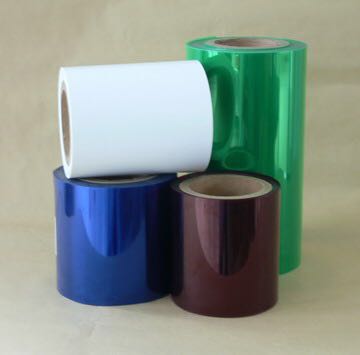What are general requirements for plastics during pharmaceutical production?
This question has neither simple answer, nor standard answer, while the applied requirement always depends on practical production.
There are three kinds of plastics that we usually use. They are: soft plastics (alu foil), hard plastics (valve body) and elastomers (O-ring). They all feature properties of surface finish and material compatibility.
1. Surface finish
One GMP requirements is that their machine should be easy to clean. Therefore, the surface contacting products should be smooth. General surface roughness for stainless steel is 0.8μm. The value can be measured during machine testing and acceptance or come from certificate of manufacturers. Aprofilometer and perthometer are both preferred for the value measurement.
However, when it comes to plastic roughness measuring, the process will be much more difficult. One reason is the risk of plastics’ being scratched by detecting machine.
If average plastic parts roughness is specified, manufacturers will apply statistical methods, measuring some parts (which are then thrown away). Alternatively, they also measure plastic parts without contacting them, such as measuring by white scanner.
For thermoplastic production, manufacturers usually use mould which is highly polished and their manufacturing techniques can also guarantee high surface smoothness. By doing so, roughness of plastics can even be better than stainless, i.e., maybe Ra≤0.8μm. This value can also be found in material certificate. If quality system of supplier is credible, this value is sufficient. ISO standards for roughness measuring of stainless steel are DIN ISO 4287 and 4288.
SEMI F57 standard for semiconductor industry (ultra-pure media technology) refers to requirements for plastic component surface. SEMASPEC 92010950B (Provision Test Method for Visual Characterization of Surface Roughness for Plastic Surface of UPW Distribution System Components) is also used for surface quality verification. However, there is no similar standard for pharmacy. In the case of plastic components produced by cutting, specific additional measures can be taken to achieve Ra<1μm.
2. Material compatibility
It’s even more difficult to make some statements about material compatibility. Basic GMP requires that material cannot have any negative influence on the quality of pharmaceutical products. Certificate for food suitability is generally used as proof, i.e., if consumed in small quantities, the material is not toxic. The following requirements also mention this point:
1) US Federal Standard CFR 21.177
2) The positive list of the Federal Institute for Risk Assessment "Recommendations on Materials for Food Contact" (formerly "Plastics Recommendations; Health Safety Food, Commodities and Feedstuff Code" (LFGB))
3) EC1935/2004 (Materials and articles intended to come into contact with food)
4) EC2023/2006 (Good manufacturing practice for materials and articles intended to come into contact with food)
However, with their further specifications, some other requirements are useful, too.
1) 3A Sanitary Standard
2) EHEDG (European Hygienic Engineering & Design Group)
3) DIN 26055 - hose assemblies or use in the pharmaceutical and biotechnical industry
4) DIN ISO 3601-3 Form and surface deviations of o-rings (for pharmaceuticals, observe "Grade characteristic S")

The US pharmacopoeia also makes statements on plastic medical properties and divides them into six bio-compatible classes. USP VI is the strictest class and is equivalent to drug license for polymer materials. Materials to be classified into the fifth class should be experimented in external lab as regulated. Therefore, animal test should be carried out to determine material toxicity (irritation when swallowed or inhaled), intra-cutaneous reactivity (tissue test) or implantation test.
In biotechnological production, specification to “SDI free” is also useful. ADI free means there is no animal derived ingredients in raw material. Therefore, plants use no animal derived ingredients during production. Such materials also contain no virus of BSE (Bovine Spongiform Encephalopathy) or TSE (Transmissible Spongiform Encephalopathy).
Besides, pharmaceutical manufacturers should clarify whether the plastics they used will chemically react with other ingredients. In addition, the leach-out test of plastics is also essential for biotechnology. We should make clear which ingredients can pass through plastics into the pharmaceutical products. Therefore, manufacturers carry out studies, in the worst case, to determine the substances that can be separated out from plastics (i.e., determination of the extractables) by using model solutions. During studies, pharmaceutical materials are used to check which ingredients can pass through plastics in practical conditions. Afterwards, technique, products and application are all taken into consideration to evaluate studies results toxicologically. The pharmaceutical user himself can also determine whether leachable and extractable studies through risk analysis are needed.
According to proper GMP standard (such as annex 15 of EU GMP), verification to construction materials are inevitable during qualification. the verification can make sure that the machine is made from the materials specified by pharmaceutical manufacturers (no material can have negative influence on medical products). In this case, material certificate can play a role since not all pharmaceutical manufacturers have the necessary means to test or identify materials.
Generally speaking, 3.1 certificate is required for stainless steel components (regulated by EN 10204). This regulation ensures that the certificate can be traced back to each components.
On the other hand, 2.1 certificate is acceptable for plastic components. With this certificate, manufacturers can determine materials’ compliance with requirements. However, this does not provide 100% legal certainty because this standard is more likely to be used for metal products but less for plastics.

 English
English


